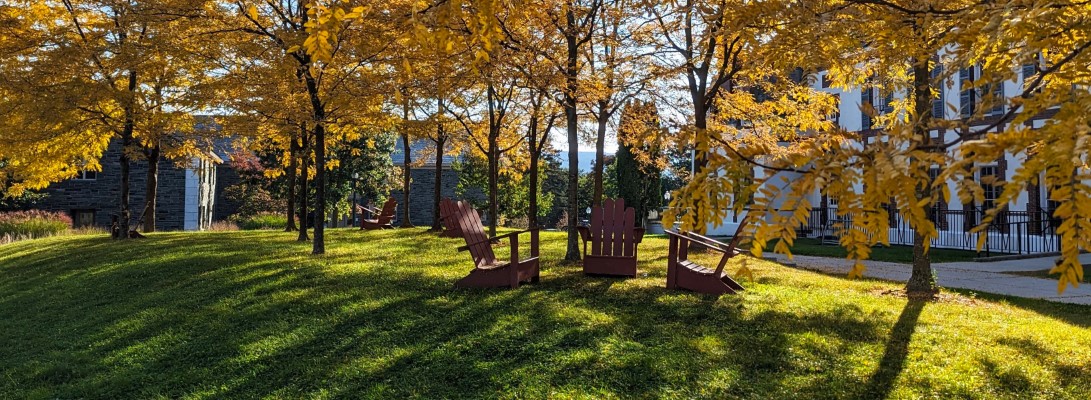I’m a big believer in tree karma. After all, I spend much of the winter at high altitude pruning trees in the canopy. (Don’t tell my mom-she still worries about running with scissors, so she wouldn’t be so into climbing with chainsaws). So do the trees still like me? I like to think I plant more than remove, but what’s the ratio here at Middlebury?
Trees in an urban forest such as ours are under more stress than in a natural forest environment. Granted, they adapt well, growing wide, as they don’t have their brethren next to them breaking wind (wait, that doesn’t sound right). They rely on each other for support, protection, and for all we know, companionship. Trees on campus get walked upon, climbed, swung from, and occasionally cut into with an axe. Root systems are walked on, soil compressed, all sorts of little indignities befall a campus tree.
Most fight valiantly, but, sadly, some succumb. It’s our job to remove the victims before they fall on something like a building, or, more importantly, someone. In arboriculture, a hazardous tree is defined as a tree that can fall on a target. That means if a tree falls in the woods, it doesn’t make any noise, because there is no target. Many trees on campus have targets-students seem to walk everywhere. So we worry. And cut the occasional tree.
Middlebury College has a vigorous tree planting program. It’s necessary in an urban forest to be continually replacing trees, much like succession in the woods. It should be on-going, as a mixed age population is more sustainable. We aim for diversity as well. No more than 30% of the trees in an urban forest population should come from the same plant family, no more than 20% from the same genus, and no more than 10% from the same species. We’ve been planting trees all along, but also removing some. So, we wondered, what was the karma factor here, were we planting more than removing?
I spent my lunch break looking at pictures of removals, and going through my planting files, worried about our department’s karma. Happily, we’re good, and by quite a bit. I’m in my fourth year here, three growing seasons, and in that time our department has removed 37 trees from the main campus. This does not include 5 or so lost to student damage, and a couple “weed” trees growing out of woodlines. We have planted over 128 trees, for a ratio of better than 3.5 to 1.

One thought on “Tree Karma”